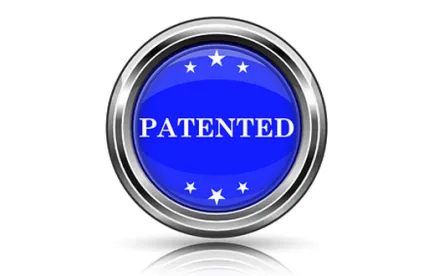Reversing a denial of judgment as a matter of law and vacating an $85 million jury verdict for patent infringement, the US Court of Appeals for the Federal Circuit held that a district court erred in its construction of two disputed claims terms and that no reasonable juror could find infringement under the correct construction. SimpleAir Inc. v. Google, Inc., Case Nos. 15-1251; -1253 (Fed. Cir., Apr. 1, 2016) (Wallach, J).
At trial, a jury found that Google infringed four asserted claims of a patent directed to a system and method for data communication connecting online networks with online and offline computers. The patent describes a system with both wired and wireless communications where the wireless system broadcasts “notification centric information.” For example, a notification can alert a user (via a wireless receiving device connected to a personal computer) that an email message has been received. The user then causes the computer to make a wired internet connection via a preferred browser to the internet to retrieve the message.
Each of the asserted claims requires the step of “instantaneously notifying said devices of receipt of said preprocessed data whether said computing devices are online or offline from a data channel associated with each device” (emphasis in original). The parties disagreed on the appropriate construction of the terms “data channel” and “whether said computing devices are online or offline from a data channel associated with each device.” The term “data channel” appears only in the claims and was added by prosecution amendment.
Google argued that the description of being either “online or offline” referred to the status of the wired internet connection, which is distinct from the separate connection directed to the wireless receiving device. As a result, Google further argued that a person of ordinary skill in the art would understand that the “data channel” of the claims referred to an internet connection that was separate from a channel used to receive notifications. It was uncontested that Google’s system relied on a single connection for both the internet connection and receiving notifications.
The patent owner argued that “data channel” was a well-understood term with different meanings depending on context. Siding with the patent owner, the district court provided a broad construction that relied on a reference to the term “data feeds” in the specification, which the patent owner argued was another way to convey the concept of data channel. The district court supported its construction by noting that Google’s construction would have rendered some of the claim language redundant.
On appeal, the Federal Circuit explained that the preference for giving meaning to all claim terms is not an inflexible rule that supersedes all other principles of claim construction, and that the claims must always be read in light of the entire patent specification. Citing multiple portions of the specification, the Court concluded that the data channel from which the device is “offline” must be different from the communication path used to receive notifications. The Court rejected the comparison of “data channel” to “data feeds,” providing support from the specification that the terms were used to describe different aspects of the invention. The Court found that the use of both “data feeds” and “data channel” in the patent’s claims also indicated that the inventor intended to use them differently.



 />i
/>i

